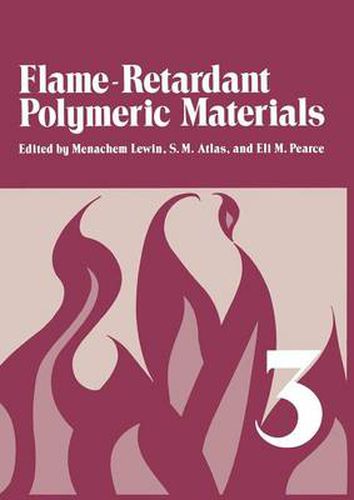Readings Newsletter
Become a Readings Member to make your shopping experience even easier.
Sign in or sign up for free!
You’re not far away from qualifying for FREE standard shipping within Australia
You’ve qualified for FREE standard shipping within Australia
The cart is loading…






This title is printed to order. This book may have been self-published. If so, we cannot guarantee the quality of the content. In the main most books will have gone through the editing process however some may not. We therefore suggest that you be aware of this before ordering this book. If in doubt check either the author or publisher’s details as we are unable to accept any returns unless they are faulty. Please contact us if you have any questions.
Flammability has been recognized as an increasingly important social and scientific problem. Fire statistics in the United States (Report on the National Commission on Fire Prevention and Control, America Burning, 1973) emphasized the vast devastation to life and property-12,000 lives lost annually due to fire and these deaths are usually caused by inhaling smoke or toxic gases; 300,000 fire injuries; 11. 4 billion dollars in fire cost of which 2. 7 billion dollars is related to property loss; a billion dollars to burn injury treatment; and 3. 3 billion dollars in productivity loss. It is obvious that much human and economic misery can be attributed to fire situations. In relation to this, polymer flammability has been recognized as an increasingly important social and scientific problem. The development of flame-retardant polymeric materials is a current example where the initiative for major scientific and technological developments is motivated by sociological pressure and legisla tion. This is part of the important trend toward a safer environment and sets a pattern for future example. Flame retardancy deals with our basic everyday life situations-housing, work areas, transportation, clothing and so forth the macroenvironment capsule within which homosapiens live. As a result, flame-retardant polymers are now emerging as a specific class of materials leading to new and diversified scientific and technological ventures.
$9.00 standard shipping within Australia
FREE standard shipping within Australia for orders over $100.00
Express & International shipping calculated at checkout
This title is printed to order. This book may have been self-published. If so, we cannot guarantee the quality of the content. In the main most books will have gone through the editing process however some may not. We therefore suggest that you be aware of this before ordering this book. If in doubt check either the author or publisher’s details as we are unable to accept any returns unless they are faulty. Please contact us if you have any questions.
Flammability has been recognized as an increasingly important social and scientific problem. Fire statistics in the United States (Report on the National Commission on Fire Prevention and Control, America Burning, 1973) emphasized the vast devastation to life and property-12,000 lives lost annually due to fire and these deaths are usually caused by inhaling smoke or toxic gases; 300,000 fire injuries; 11. 4 billion dollars in fire cost of which 2. 7 billion dollars is related to property loss; a billion dollars to burn injury treatment; and 3. 3 billion dollars in productivity loss. It is obvious that much human and economic misery can be attributed to fire situations. In relation to this, polymer flammability has been recognized as an increasingly important social and scientific problem. The development of flame-retardant polymeric materials is a current example where the initiative for major scientific and technological developments is motivated by sociological pressure and legisla tion. This is part of the important trend toward a safer environment and sets a pattern for future example. Flame retardancy deals with our basic everyday life situations-housing, work areas, transportation, clothing and so forth the macroenvironment capsule within which homosapiens live. As a result, flame-retardant polymers are now emerging as a specific class of materials leading to new and diversified scientific and technological ventures.